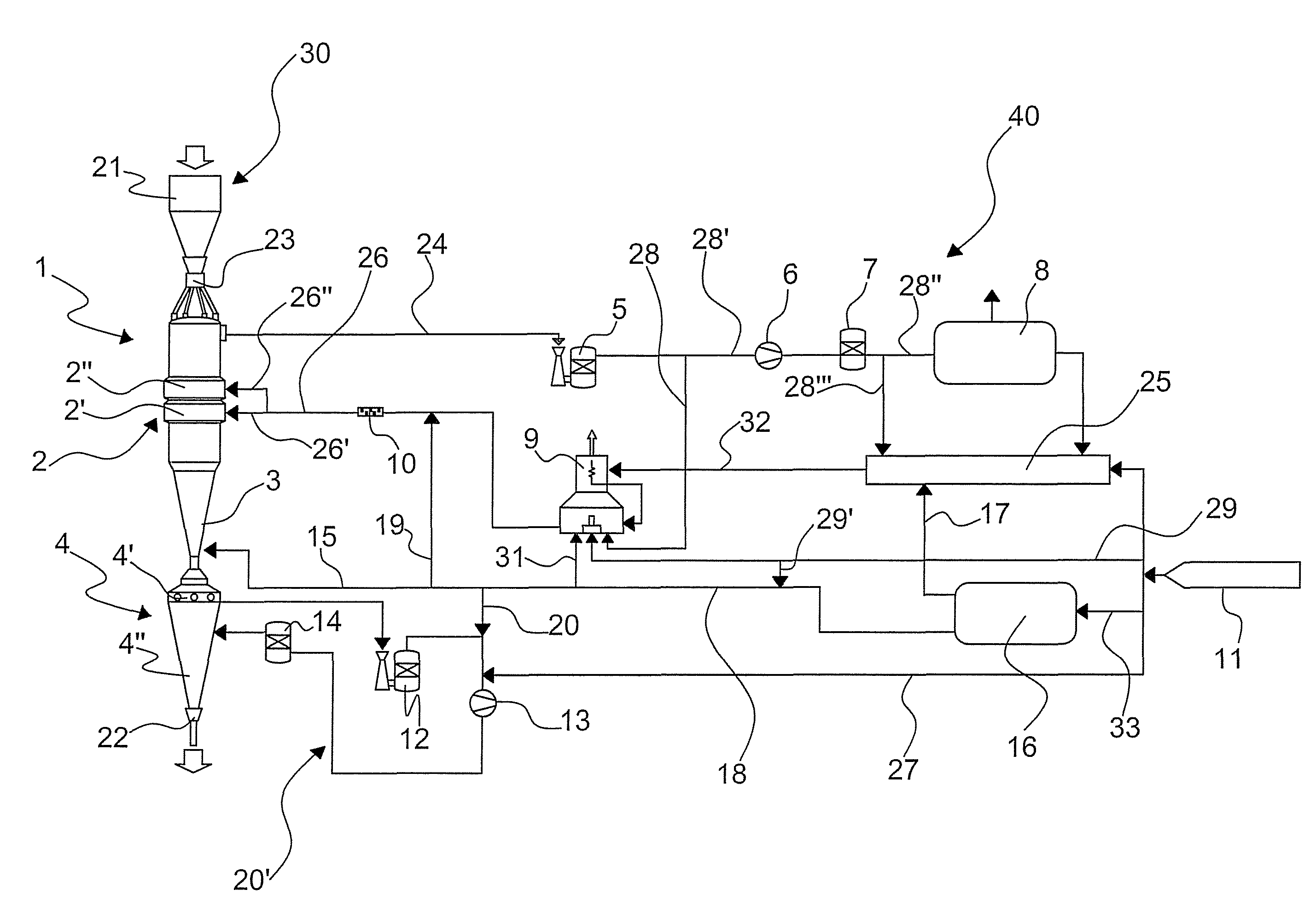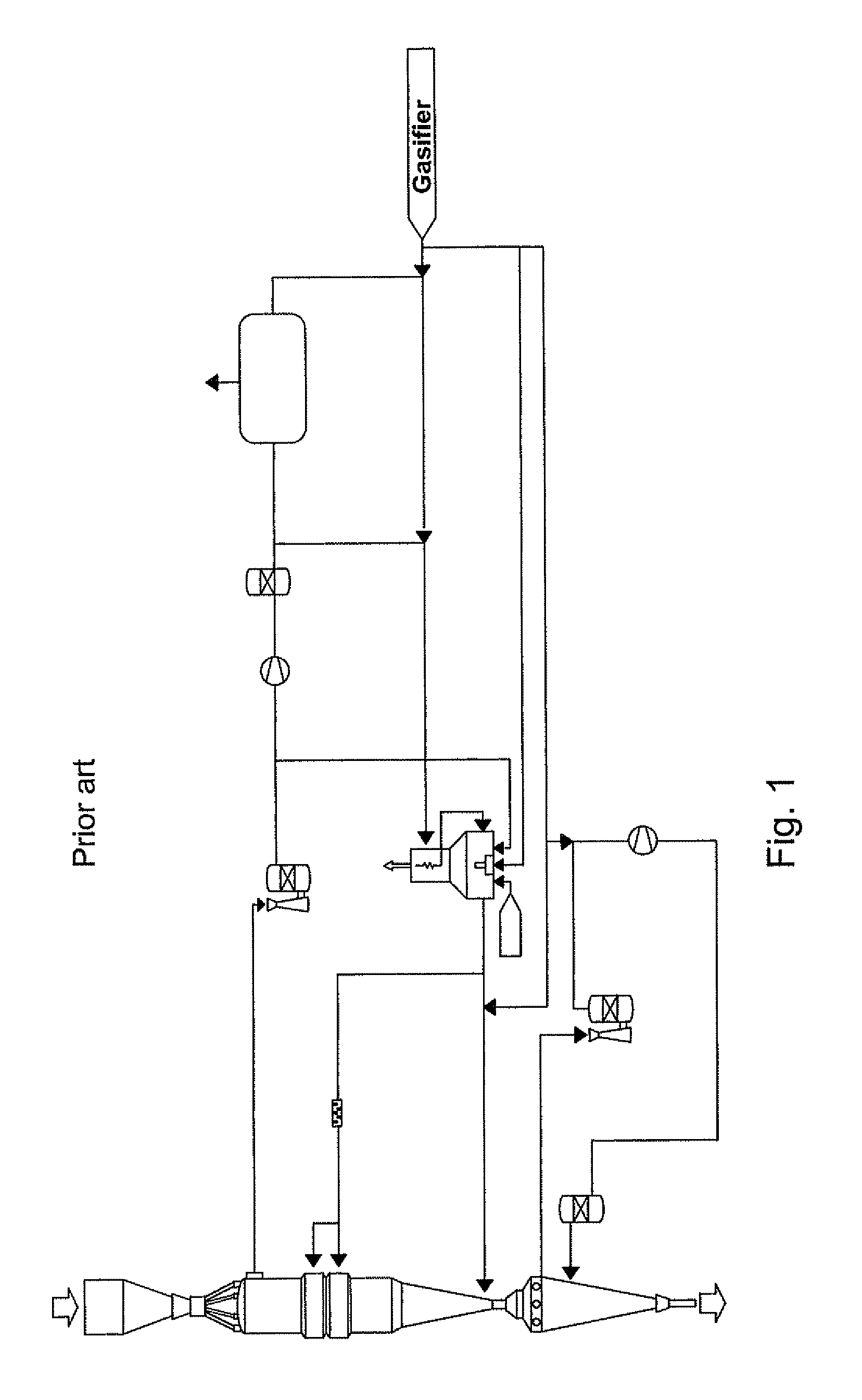Reduction process and plant
a technology of reducing gas line and reaction zone, which is applied in the direction of manufacturing converters, blast furnace components, blast furnaces, etc., can solve the problems of excess methane in the reducing gas line entering the reactor, the temperature in the reaction zone may be below, and the possibility of controlling the process in the reaction zone of the reactor is extremely limited
- Summary
- Abstract
- Description
- Claims
- Application Information
AI Technical Summary
Benefits of technology
Problems solved by technology
Method used
Image
Examples
Embodiment Construction
[0056]With reference to FIG. 2 a layout of a reduction plant suitable for performing the process according to the present invention is illustrated.
[0057]Said plant provides for the connection by means of a plant circuit, indicated as a whole by the number 40, of a reduction shaft 30 with an external source 11 supplying synthesis gas, otherwise known as syngas, which is used as the reducing gas and produced for instance by a coal gasifier.
[0058]The reduction shaft 30 comprises from top to bottom:[0059]an iron ore feeding zone 21,[0060]a reactor or shaft 1 for the direct reduction of the minerals,[0061]a carburization zone 3,[0062]a cooling vessel 4.
[0063]The reactor or shaft 1 produces hot metallic iron or DRI, from oxides in the form of pellets and / or lumps, that descends due to the effects of gravity into the carburization zone 3. The cooling vessel 4 downstream is in turn directly connected to a discharging device by means of a dynamic gas seal leg 22. A second dynamic gas seal le...
PUM
| Property | Measurement | Unit |
|---|---|---|
| temperature | aaaaa | aaaaa |
| temperature | aaaaa | aaaaa |
| temperature | aaaaa | aaaaa |
Abstract
Description
Claims
Application Information
 Login to View More
Login to View More - R&D
- Intellectual Property
- Life Sciences
- Materials
- Tech Scout
- Unparalleled Data Quality
- Higher Quality Content
- 60% Fewer Hallucinations
Browse by: Latest US Patents, China's latest patents, Technical Efficacy Thesaurus, Application Domain, Technology Topic, Popular Technical Reports.
© 2025 PatSnap. All rights reserved.Legal|Privacy policy|Modern Slavery Act Transparency Statement|Sitemap|About US| Contact US: help@patsnap.com



